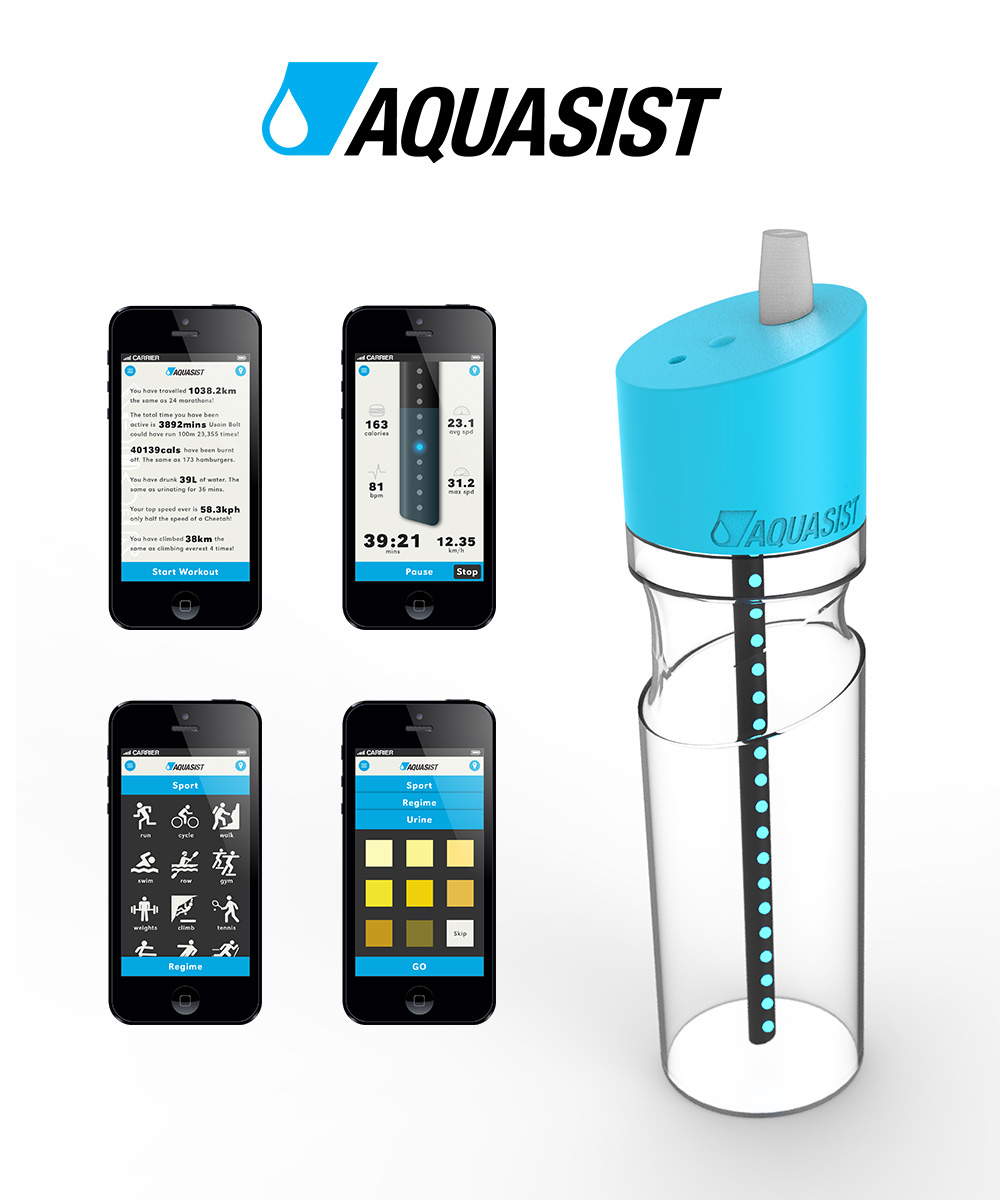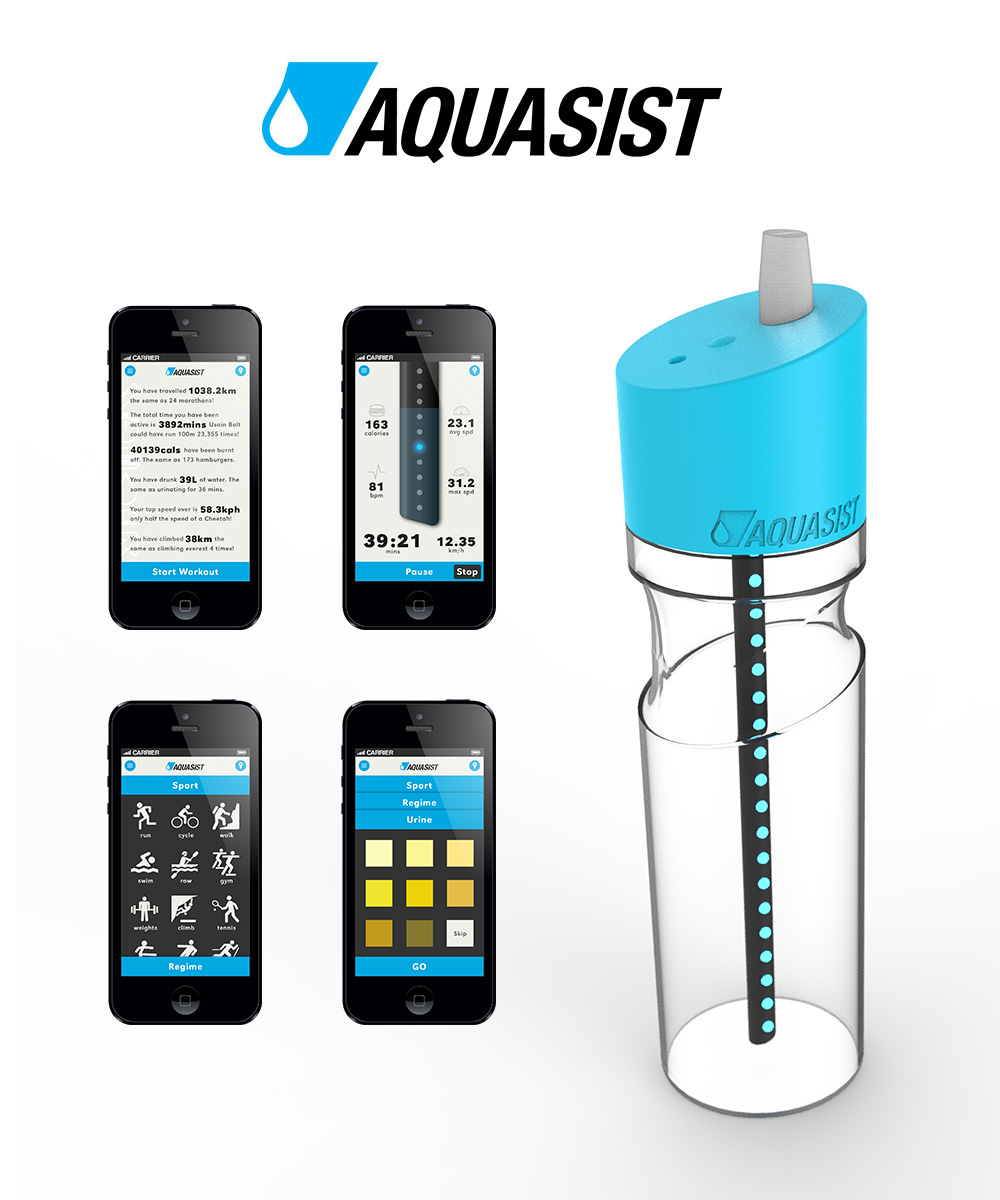
Monitoring the fluid intake of professional athletes.
This 5 month project was part of the Sport Innovation Minor at TU Delft, and was in collaboration with 3 other students studying Mechanical Engineering, Human Movement Sciences and Product Design Engineering.

Brief
Develop an intelligent measuring system which can measure the fluid loss of the body and monitor the uptake of liquid in a bottle.
The data should be stored in a database and feedback given to the user through a smart- phone App and a bottle.
Initial Research Areas
Various surveys were conducted with committed sports enthusiast to gain an understanding of the awareness of issues with incorrect hydration, how they currently stay hydrated and their willingness to change how they do this.
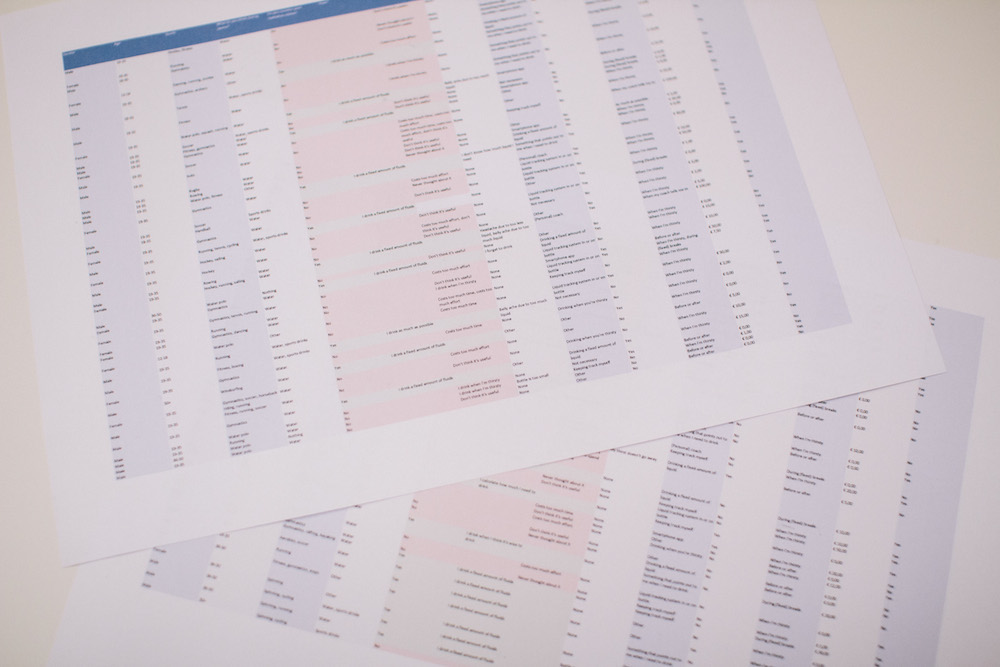
Over 100 people took part in the survey, and these were the key findings:
- Only 30% of athletes monitor their hydration level
- 60% of athletes think monitoring hydration is useless
- The majority of athletes only drink when they are thirsty
- Over 60% would be interested in a monitoring system
- From these people 90% would want it integrated into their smartphone.
Literature Research Findings
Monitoring hydration during sport is a very common subject and therefore there is a lot of material available on this topic. After looking through many reports and papers 3 key things were discovered.
- When someone becomes thirsty they are already dehydrated to a point which creates sporting disadvantage
- The best way to monitor hydration level is by the colour of urine
- Being correctly hydrated increases performance a noticeable amount
Observational Research
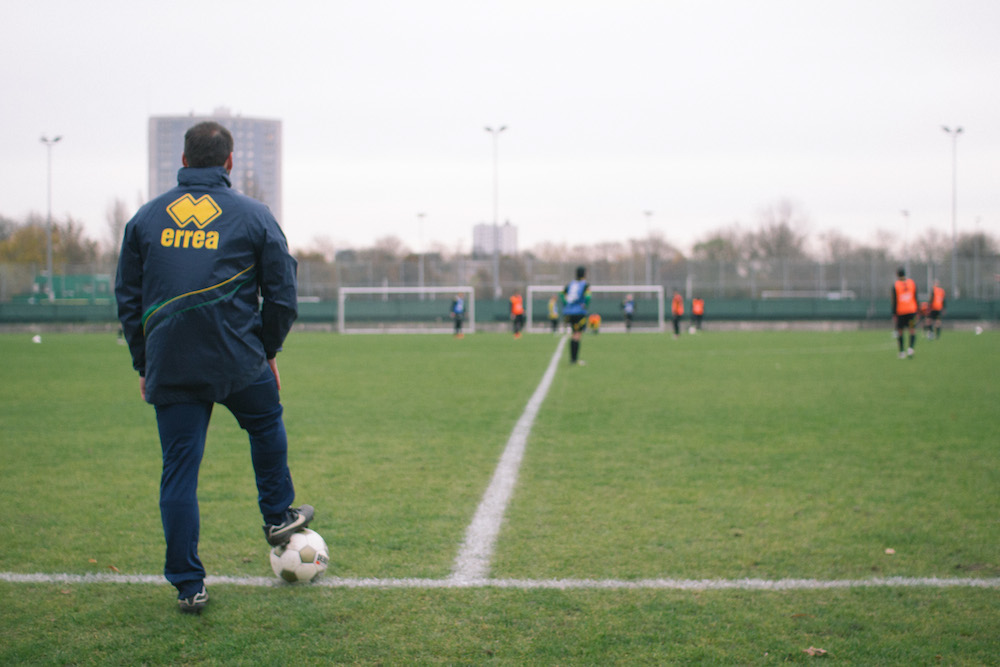
At the ADO Den Haag training grounds
As the product is targeted towards professional and semi-professional athletes many visits and interviews were done with these people. We worked directly with a professional football team (ADO Den Haag) where we had discussion with the coach and physiotherapist alongside talking to the players themselves. Visits were also made to other professional teams including the Dutch basketball team amongst others.

The design team observing training
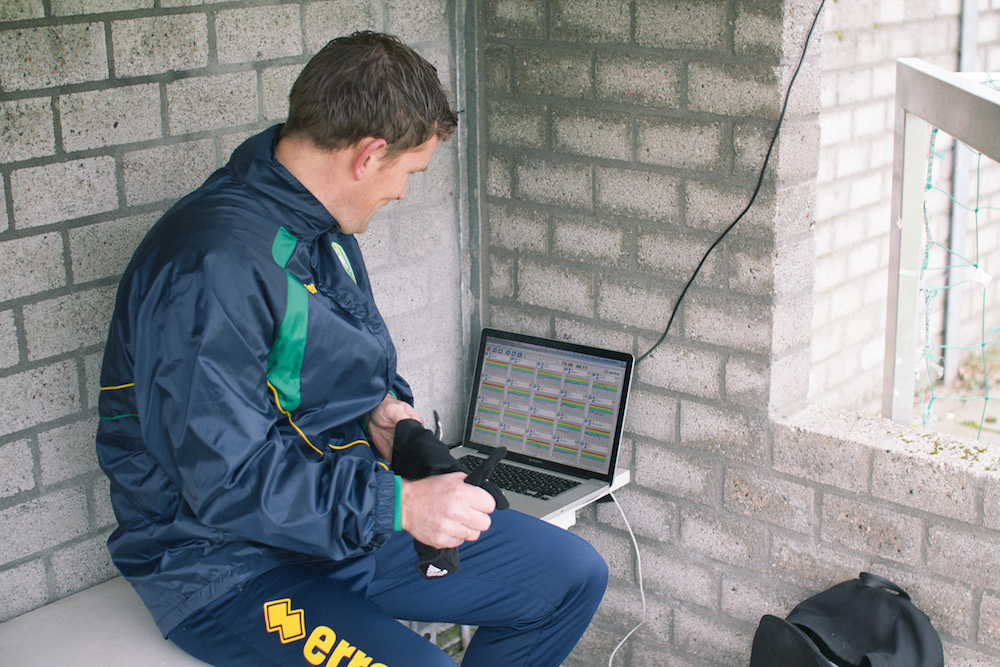
Looking at how the current fitness monitoring worked
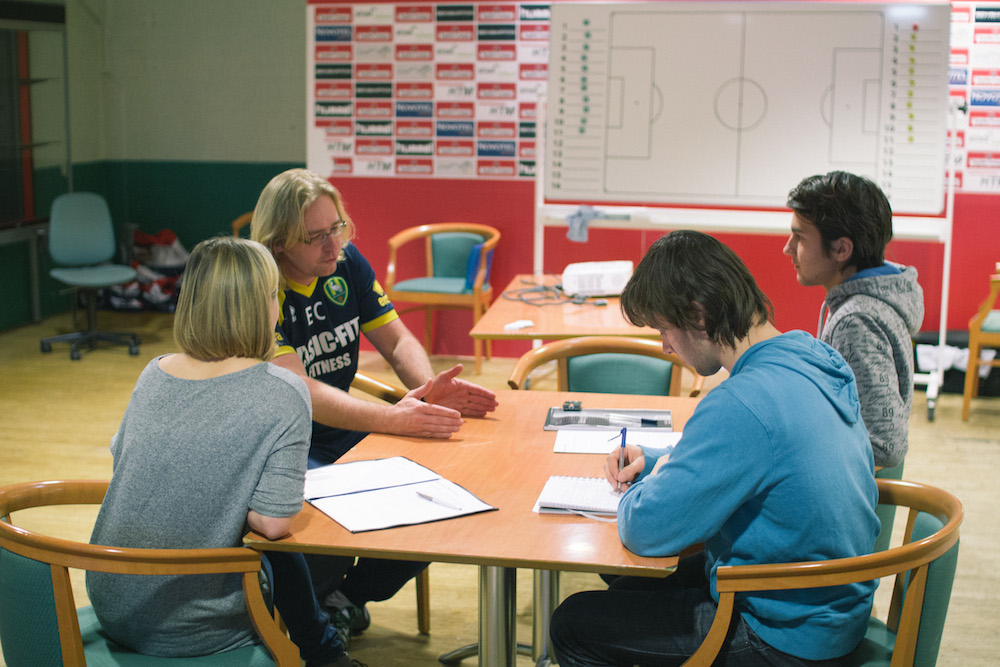
Talking directly with the head coach
Project Focus
Based upon findings from talking with amateur athletes and many interviews with professionals it became clear that there would be 3 key components to the solution, all working flawlessly together: the water bottle, a smartphone app and the data System.
System Design
The basic flow diagram then led on to the full data system.
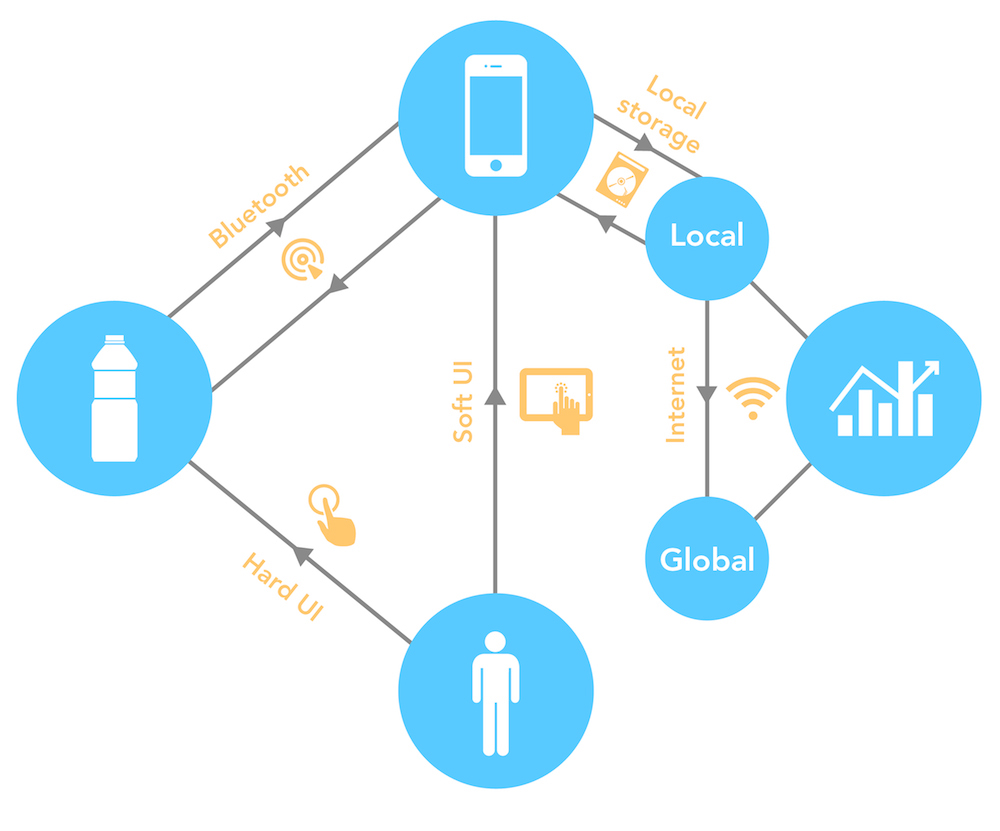

The final data system flow diagram
Bottle Development
To begin the development of the bottle the internal components were considered. This area of the project was worked on mainly by the Mechanical Engineer, analysing the most appropriate ways to monitor the level of fluid passing through a tube. It was decided that a rotational flow meter (impeller) would be used with an embedded magnet to allow a sensor to determine when it was rotating.
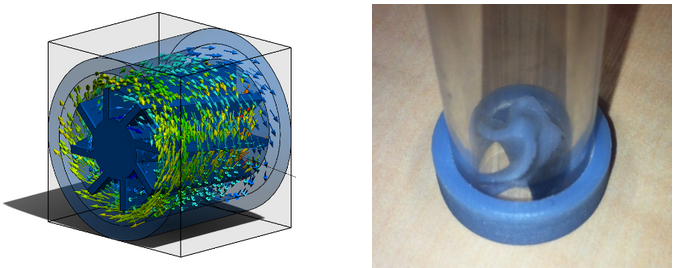
To test the design of the impeller 3D printed models were made and tested using slow motion video equipment.
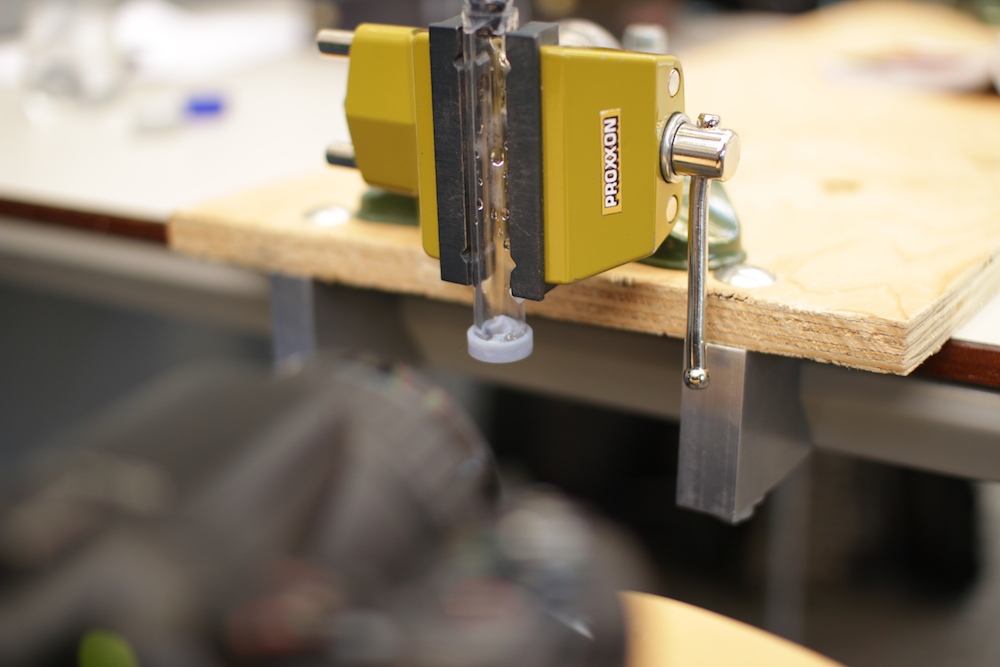
Bottle Design
After the core internal components had beed designed and tested, form studies began regarding the overall design and appearance of the bottle. The first stages were in researching anthropometric data using the DINED system, this allowed us to create a bottle with a diameter the majority of people in the EU could use.

Following on from this, materials were decided based upon research and existing products and then simple form studies began. Taking into account the target market and the associated product language of sporting goods a recognisable visual style was created. Quick concept sketches and full renders were used to communicate these ideas.
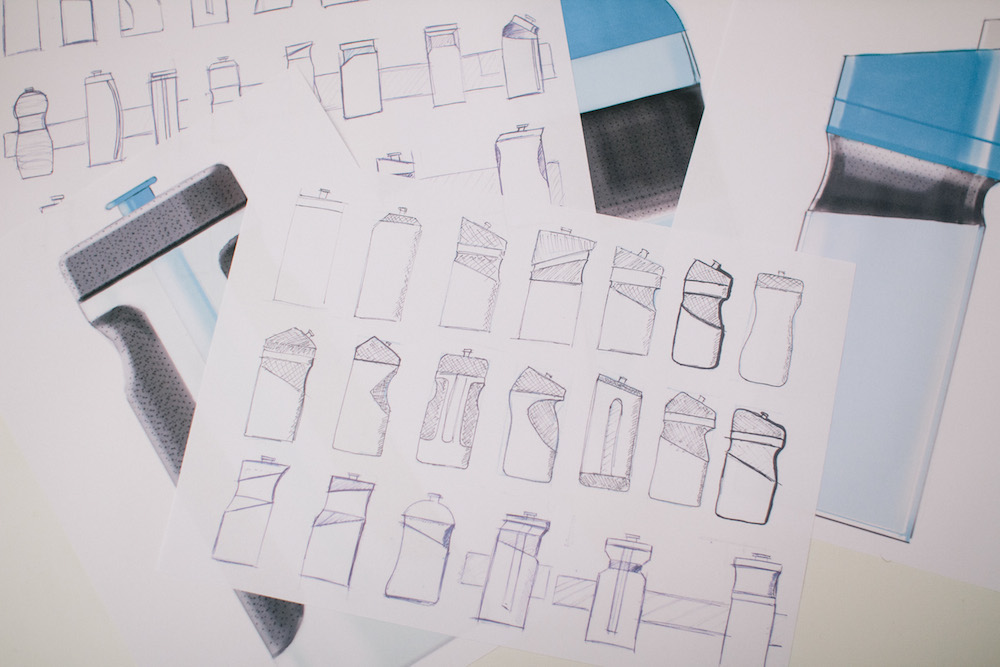
At this stage the it became clear that the focus of the design should be on the visual feedback system of the bottle. Through many iterations and testing it was decided to use a rod in the centre of the bottle to indicate the level to drink to through LED's. This was the most simple option as it meant the entirety of the electronics could be stored in the lid keeping the actual design of the bottle very simple.
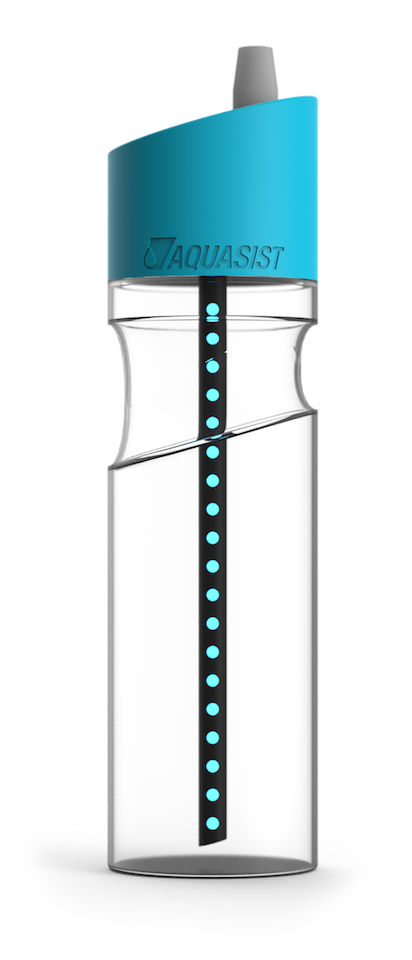
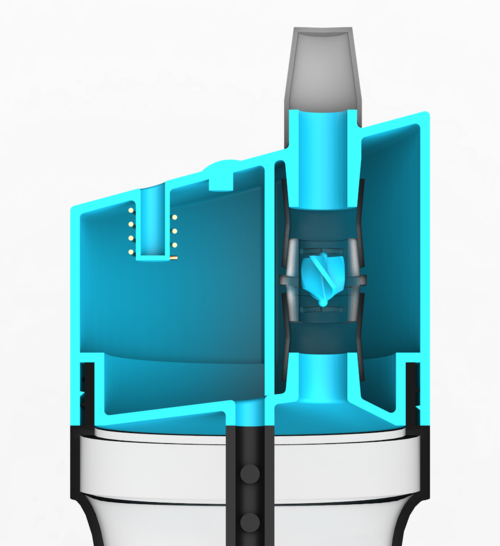
Logo Design
A logo was developed to mirror the simple design of the product and create a strong visual brand heavily associated with sport. Quick sketching techniques were again used before mocking up the design in illustrator and then developing the final design that mimicked the bottles lid. This process can be seen below.
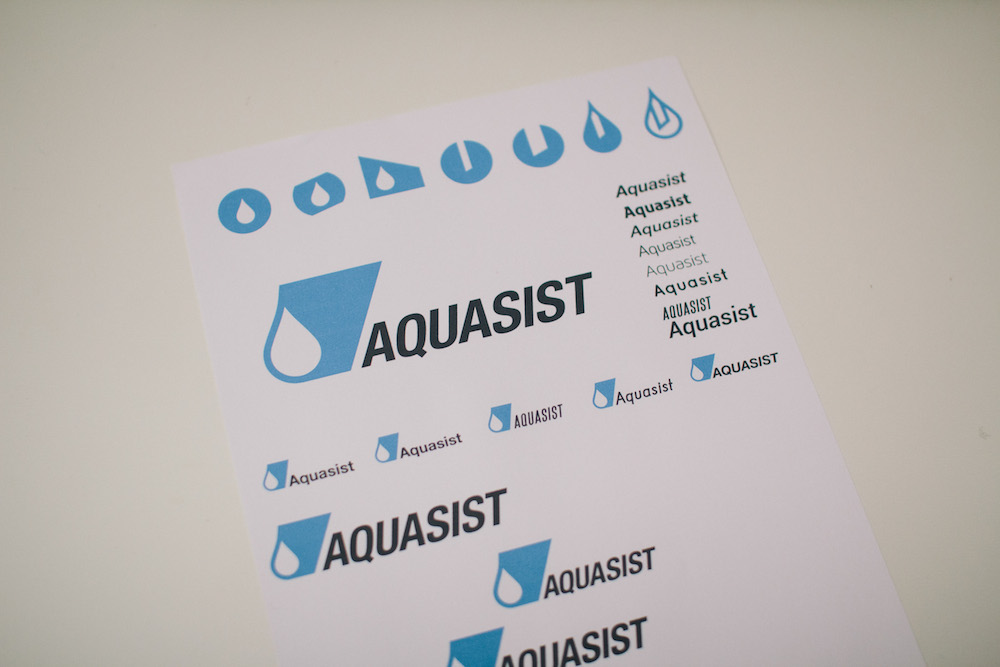

App Design
The design of the app was a crucial part for the project as it is the main source of user interaction with the product. Because of this extensive research was done into UI theory and many iterations were created before settling on the final interface.
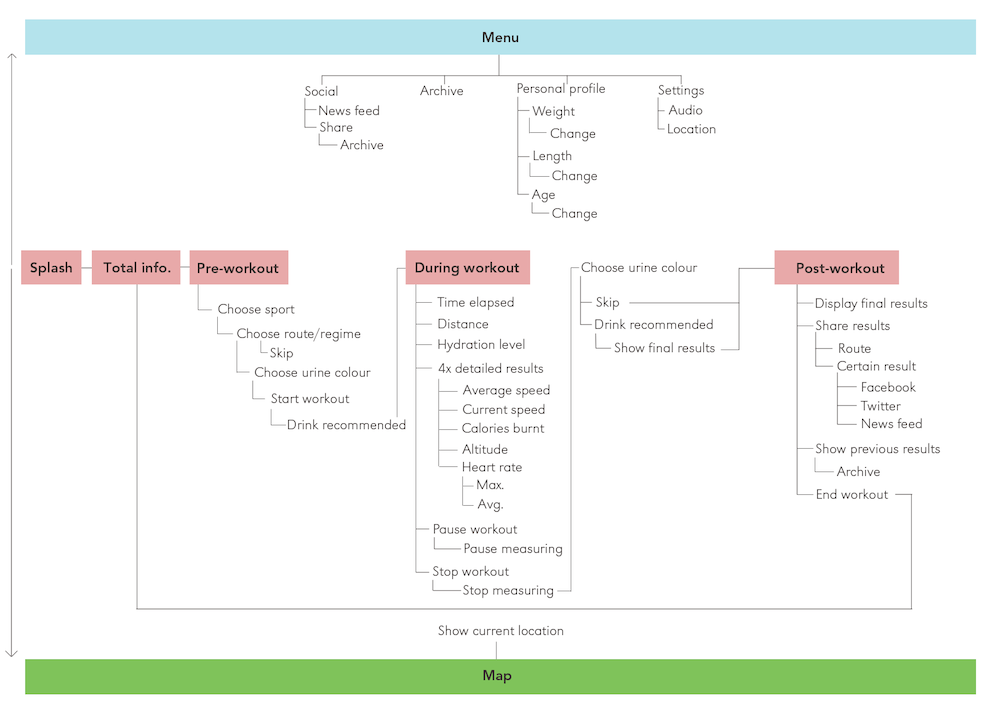
Interface flowchart
UI sketches
Final Proposal
